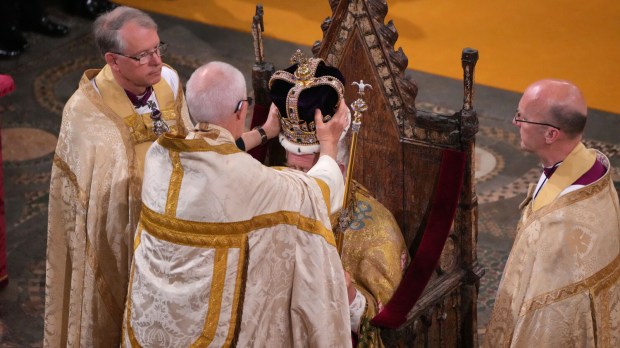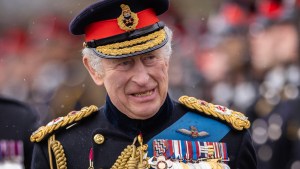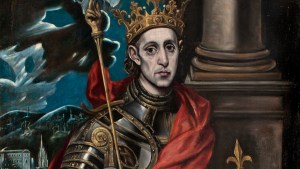King Charles III was officially crowned on May 6, 2023, in a ceremony that hearkened back to the Middle Ages.
In fact, many of the symbolic regalia used during the coronation have roots in the Catholic Church and are still seen in many religious paintings of saints.
The Church of England provided a handy commentary on the entire ceremony.
Crown of St. Edward
Modeled after the original crown of St. Edward the Confessor, the crown has an orb and cross on top of it, “a reminder that Jesus gave his life for us. The crown, therefore, signifies more than kingly dignity, but also costly sacrifice – the sacrifice of love.”
The Sword of Spiritual Justice
Several swords were presented to King Charles, including the Sword of Spiritual Justice. The Catholic Encyclopediaexplains the symbolism behind these swords, “The first two swords were known to medieval writers as the sword of the clergy and the sword of justice. They represent the king’s two promises, to defend the Church.”
The swords also call to mind the “Sword of the Spirit” that St. Paul talks about in his Letter to the Ephesians.
Orb
King Charles was presented with an orb, surmounted with a cross. This is a “representation of the Sovereign’s power and symbolizing the world under the cross of Christ.”
This symbol is often seen in Catholic imagery, especially with the Infant of Prague.
Scepter
The scepter used in King Charles’ coronation, “traditionally known as ‘the Rod of Equity
and Mercy,’ represents the Sovereign’s spiritual role, with the enameled dove with outspread
wings representing the Holy Spirit, and the Monarch’s pastoral care for the People.”
Scepters are often seen in many Catholic artistic representations of the Holy Trinity, representing God’s sovereignty over humanity.
Oil
Blessed oil is still used in the Catholic Church during Baptism, Confirmation, Anointing of the Sick and Holy Orders, and has a rich history, steeped in biblical symbolism.
King Charles was consecrated with oil that was from Jerusalem, cementing the biblical use of oil to consecrate kings.
The Archbishop in Jerusalem presents the oil in this moment, symbolically completing the oil’s journey and helping to emphasize the strong historic link between the Coronation, The Old Testament and the Holy Land, drawing on the imagery of the oil and the narrative thread that runs from King Saul.



